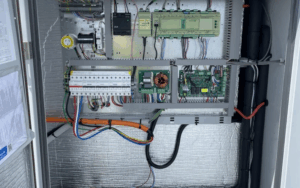Heat transfer printing is a popular method for creating custom designs on clothing. This process involves transferring a design from a specially prepared material onto fabric using heat and pressure. Heat transfer printing is widely used for promotional clothing, sports jerseys, workwear, and custom apparel due to its ability to produce vibrant and detailed designs.
However, maintaining the quality of heat transfer printed clothing requires specific care practices to ensure the designs remain vibrant and durable over time. This article explores practical tips and best practices for preserving heat transfer printed clothing, ensuring longevity and maintaining the original look and feel.
Proper Washing Techniques
To preserve the quality and longevity of heat transfer printed clothing, following proper washing techniques is crucial:
- Turn Garments Inside Out: Always turn the garment inside out before washing to protect the printed design from abrasion and friction.
- Use Cold Water: Wash heat transfer printed clothing in cold water to prevent the vinyl from melting or warping. Hot water can cause the adhesive to weaken, leading to peeling.
- Gentle Cycle: Use a gentle cycle setting on the washing machine to minimize agitation and reduce stress on the printed design.
- Avoid Bleach and Fabric Softeners: Bleach and fabric softeners can damage the adhesive and cause fading. Use mild detergents instead.
Hand Washing
For delicate garments or designs, hand washing is a preferable option:
- Fill a basin with cold water and add a small amount of mild detergent.
- Submerge the garment and gently agitate the water to distribute the detergent.
- Gently rub the fabric together to clean the garment without scrubbing the design.
- Rinse thoroughly with cold water until all detergent is removed.
Drying Techniques

Air drying is the most effective method for preserving heat transfer printed clothing:
- Hang or Lay Flat: Hang the garment on a clothesline or lay it flat on a clean surface to dry. Avoid using clothespins directly on the printed design.
- Avoid Direct Sunlight: Prolonged exposure to direct sunlight can cause fading. Dry garments in a shaded area or indoors.
Machine Drying
If machine drying is necessary, follow these guidelines:
- Low Heat Setting: Use a low heat setting on the dryer to prevent the vinyl from melting or warping.
- Remove Promptly: Remove garments from the dryer as soon as the cycle is complete to prevent excessive heat exposure.
Ironing and Heat Exposure
Ironing heat transfer printed clothing requires caution to avoid damaging the design:
- Turn Garment Inside Out: Always iron the garment inside out to protect the printed design from direct heat.
- Use a Low Heat Setting: Set the iron to a low heat setting to prevent melting the vinyl.
- Avoid Direct Contact: Place a thin cloth or parchment paper between the iron and the printed design to avoid direct contact.
Heat Exposure Risks
Excessive heat can weaken the adhesive and cause the design to peel or crack. Avoid exposing heat transfer printed clothing to high temperatures from:
- Radiators and Heaters: Keep garments away from direct contact with radiators and heaters.
- Hot Water: Avoid using hot water when washing or rinsing garments.
Storing Heat Transfer Printed Clothing

Storing heat transfer printed clothing correctly helps maintain the quality of the design:
- Fold Carefully: Fold garments neatly, avoiding creases on the printed design.
- Avoid Stacking: Do not stack heavy items on top of printed clothing to prevent pressure on the design.
- Use Hangers: Hang garments in a well-ventilated closet to avoid wrinkles and creases.
Long-term Storage
For long-term storage, follow these guidelines:
- Use Garment Bags: Store clothing in breathable garment bags to protect from dust and moisture.
- Avoid Damp Areas: Store garments in a cool, dry place to prevent mould and mildew.
Common Mistakes to Avoid
Pre-treatment is essential for ensuring the best results with heat transfer printing:
- Pre-Wash Fabrics: Always pre-wash fabrics to remove sizing and chemicals that may interfere with the adhesive.
- Check Fabric Compatibility: Ensure the fabric is compatible with the heat transfer material to avoid issues with adhesion.
Ignoring Care Labels
Always follow the care labels on garments for specific washing and drying instructions. Ignoring these labels can result in damage to the printed design.
Overloading the Washing Machine
Overloading the washing machine can cause excessive friction and abrasion on the printed design. Wash heat transfer printed clothing with similar items and avoid overcrowding.
Regular Maintenance
Perform regular maintenance on heat transfer printed clothing to keep them in top condition:
- Inspect for Damage: Regularly inspect garments for signs of peeling or cracking, and address issues promptly.
- Reapply Heat: If a design starts to peel, reapply heat with a heat press or iron to restore adhesion.
Conclusion
Heat transfer printed clothing offers a versatile and vibrant way to create custom designs on fabric. However, maintaining the quality and longevity of these garments requires proper care and attention. By following the outlined washing, drying, and storage techniques, you can ensure that your heat transfer printed clothing remains in excellent condition for years to come.





